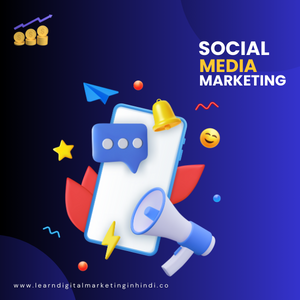Traditional marketing typically refers to marketing methods that have been used for decades before the rise of the internet. This includes strategies such as print advertising, television and radio commercials, direct mail, billboards, and telemarketing.
Traditional marketing relies heavily on reaching a broad audience through mass media channels.On the other hand, digital marketing involves promoting products or services through digital channels such as the internet, social media, email, search engines, and mobile apps.
Digital marketing leverages technology to target specific audiences, track performance metrics in real-time, and engage with customers on a more personal level.
Now, diving deeper into a detailed review of traditional marketing and digital marketing
- Traditional Marketing:-
Traditional marketing has long been the cornerstone of advertising and promotion. Here’s a breakdown of its key aspects:Print Advertising:Magazines, newspapers, brochures, and flyers have been primary vehicles for advertising.It offers tangible, visually appealing content but lacks real-time interaction and tracking.Broadcast Advertising:Television and radio commercials have dominated this space, offering wide reach and engagement.However, they are expensive, with limited targeting options and difficulty in measuring ROI accurately.
- Outdoor Advertising:
Billboards, posters, and signage provide exposure to a local or passing audience.It’s effective for brand awareness but lacks interactivity and targeting capabilities.
Direct Mail Marketing:
Sending physical promotional materials directly to potential customers’ mailboxes.It can be personalized but has high production and distribution costs, along with environmental concerns.
Telemarketing:
Directly reaching out to potential customers via phone calls.It’s intrusive and often met with resistance due to privacy concerns and regulatory restrictions.
Digital Marketing:

Digital marketing has revolutionized how businesses connect with their target audience. Here’s how it stands out.
Search Engine Optimization
(SEO):Optimizing website content to rank higher in search engine results.It drives organic traffic, enhances visibility, and builds credibility but requires ongoing effort and adaptation to algorithm changes.

Pay-Per-Click Advertising (PPC):
Placing ads on search engine results pages or other websites and paying only when users click on them.Offers precise targeting, instant results, and detailed analytics but can be costly and competitive.
Social Media Marketing:

Utilizing social media platforms like Facebook, Instagram, Twitter, and LinkedIn to engage with audiences.It enables targeted advertising, fosters brand loyalty, and facilitates real-time customer interaction but requires consistent content creation and community management.
Content Marketing:

Creating and sharing valuable, relevant content to attract and retain a specific audience.It builds trust, educates customers, and drives conversions over time but demands creativity and consistency.
Email Marketing:
Sending targeted, personalized messages to subscribers’ inboxes.It’s cost-effective, scalable, and customizable but requires careful planning to avoid spamming and ensure relevance.
Influencer Marketing:
Collaborating with individuals with a large following on social media to promote products or services.It can boost brand visibility, credibility, and reach but requires finding the right influencers and maintaining authenticity.
Detailed Review
Traditional Marketing:
Traditional marketing has served businesses well for decades, offering broad exposure through widely-used channels. However, its effectiveness is declining in today’s digital age due to several factors
Limited Targeting:
Traditional marketing methods often lack precise targeting capabilities, leading to wasted resources and lower ROI.Broadcasting messages to a broad audience may reach some potential customers, but it also reaches many irrelevant ones.
Inability to Track ROI:
Measuring the success of traditional marketing campaigns is challenging, with limited means to track conversions and attribute them to specific efforts.This makes it difficult for businesses to optimize their strategies and justify their marketing spend effectively.
Declining Audience Engagement:
With the rise of ad-blocking software, DVRs, and streaming services, traditional ads are increasingly ignored or skipped by consumers.This reduces their impact and makes it harder for businesses to capture and retain audience attention.
High Costs:

Producing and distributing traditional marketing materials can be expensive, especially for television commercials, print ads, and direct mail campaigns.Small businesses with limited budgets may struggle to compete effectively in traditional marketing channels.Environmental Concerns:Print advertising and direct mail marketing contribute to paper waste and environmental pollution, which can harm a company’s reputation among environmentally-conscious consumers.
Digital Marketing:
Digital marketing offers numerous advantages over traditional methods, making it indispensable for modern businesses
Precise Targeting:
Digital marketing platforms allow businesses to target specific demographics, interests, and behaviors, ensuring that their messages reach the most relevant audience.This leads to higher conversion rates and better ROI compared to traditional marketing.
Real-Time Analytics:
Digital marketing tools provide detailed insights into campaign performance, including metrics such as website traffic, click-through rates, conversion rates, and customer engagement.This allows businesses to monitor their progress, identify areas for improvement, and make data-driven decisions to optimize their strategies.
Interactivity and Engagement:
Digital marketing enables two-way communication between businesses and customers, fostering engagement and relationship-building.Social media platforms, in particular, offer opportunities for dialogue, feedback, and customer support in real-time.
Cost-Effectiveness:
Digital marketing can be more cost-effective than traditional marketing, especially for small businesses with limited budgets.Strategies such as content marketing, email marketing, and social media marketing require minimal investment but can yield significant returns over time.
Global Reach:
The internet transcends geographical boundaries, allowing businesses to reach audiences around the world with their digital marketing efforts.This opens up new markets and growth opportunities that may not be accessible through traditional marketing channels alone.
Flexibility and Adaptability:
Digital marketing campaigns can be easily modified and optimized on the fly based on real-time feedback and performance data.This agility enables businesses to respond quickly to changing market conditions, consumer trends, and competitive pressures.In conclusion, while traditional marketing still has its place in certain contexts,
digital marketing has emerged as the preferred choice for modern businesses seeking to maximize their reach, engagement, and ROI in today’s digital landscape. By leveraging the power of technology, data, and interactivity, digital marketing enables businesses to connect with their target audience more effectively, drive meaningful engagement, and achieve measurable results. As consumer behavior continues to evolve and technology advances, the importance of digital marketing will only continue to grow, making it essential for businesses to embrace and master digital strategies to stay competitive in the digital age.
